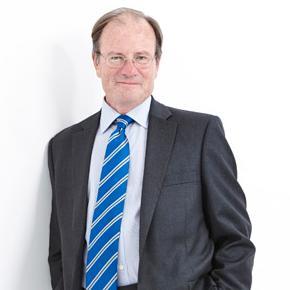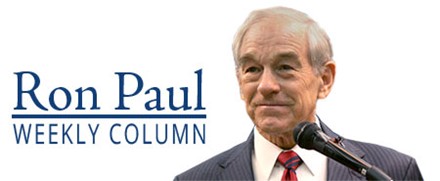How can the Fed possibly unwind QE?
by Alasdair Macleod, GoldMoney:
 There are currently two important items on the Fed’s wish list. The first is to restore interest rates to more normal levels, and the second is to unwind the Fed’s balance sheet, which has expanded since the great financial crisis, principally through quantitative easing (QE). Is this not just common sense?
There are currently two important items on the Fed’s wish list. The first is to restore interest rates to more normal levels, and the second is to unwind the Fed’s balance sheet, which has expanded since the great financial crisis, principally through quantitative easing (QE). Is this not just common sense?
Maybe. It is one thing to wish, another to achieve. The Fed has demonstrated only one skill, and that is to ensure the quantity of money continually expands, yet they are now saying they will attempt to achieve the opposite, at least with base money, while increasing interest rates.
Both these aims appear reasonable if they can be accomplished, but the game is given away by the objective. It is the desire to return the Fed’s interest rate policies and balance sheet towards where they were before the last financial crisis, because the Fed wants to be prepared for the next one. Essentially, the Fed is admitting that its monetary policies are not guaranteed to work, and despite all the PhDs employed in the federal system, central bank policy remains stuck in a blind alley. Fed does not want to institute a normalised balance sheet just for the sake of it.
Of course, this must be officially denied, which is what Ms Yellen did recently, when she claimed another financial crisis is unlikely in our lifetimes. Being in a state of official denial draws attention away from the difficulty of restoring both interest rates and the Fed’s balance sheet to a time in the past.
So, on interest rates, in the Fed’s collective mind, the reason they must be normalised is only to give them some room to be lowered in the event of a crisis. The Keynesian conviction, which is shared throughout Western central banks, is interest rates must generally be kept low to stimulate the economy. The concept of interest rate normality, by which the Fed presumably means the rate set by free markets, is wholly at odds with the Fed’s economic religion.
And what is that normal rate? According to central bankers it is between an undefined something and the Taylor rulei. The Taylor rule is likely to be considered only when justification for zero or even negative rates is required. And we have no way of knowing what the market rate would be, because the Fed does not permit free markets to determine interest rates.
Confusion over reducing the balance sheet
The muddle over interest rates is as nothing compared with the contradictions over the Fed’s proposal to reduce its balance sheet. Since the great financial crisis, quantitative easing has allowed the commercial banks to de-leverage their balance sheets without having to sell assets, thereby preserving capital and collateral values in the private sector. Essentially, the Fed is proposing to reverse this earlier de-leveraging by offsetting the contraction of narrow money with an increase in bank credit.
The mechanism contemplated is to run off maturing assets, and if the opportunity arises, to sell assets outright. On the Fed’s balance sheet, assets are reduced accordingly, and the Fed’s liabilities to commercial banks (recorded as their reserves) are reduced as well. Normally, reducing commercial bank reserves parked with the Fed would be achieved by reducing the Fed funds rate, making it less attractive to hold excess reserves. Instead, the Fed seeks to balance its asset runoff with an increase in the FFR to a more normal level, whatever that is. This is going to be interesting, to say the least.
The only way assets on the Fed’s balance sheet can be reduced while interest rates are raised is to hope that borrowers in the private sector will be prepared to accelerate their borrowing, despite the Fed raising its FFR to its estimate of normal levels. Demand for bank credit must increase strongly enough to encourage commercial banks to withdraw funds from the Fed. But this puts the cart before the horse. The normal course of events in the Fed’s playbook is for the FFR to be raised after demand for bank credit materialises, and before price inflation is stimulated beyond the target rate. It is that that has always led into the crisis phase in the credit cycle, because the Fed cannot manage this simple process, let alone a compound monetary objective.
You would think, from reports that economic growth has been subdued since the great financial crisis, that bank credit growth has also been restrained, and is yet to reflect the expansion of base money. This is untrue. Since the great financial crisis, outstanding public and private sector debt in America has increased from about $35tn to $50tn today, an increase of 40%. It is into an economy with this added burden of debt that the Fed plans to unwind its balance sheet and raise interest rates. This cannot happen without strong demand for new credit in addition to that already created, which at first sight, is difficult to imagine if the FFR is being increased to “normal”.
In last week’s testimony to the Senate Committee on Banking, Ms Yellen appeared to back down from earlier, more aggressive, statements from the Fed’s FOMC, confirming perhaps that none of this makes sense in the current economic climate. The Fed may be tacitly admitting to the difficulties involved, having had further thoughts. Unfortunately, the option of wait-and-see, much loved by the current Fed, doesn’t look so attractive either, now that the balance sheet reduction hare has been set running.
Presumably, the Fed still assumes that at some point in the future, bank credit will be demanded in increasing quantities, offering the opportunity to reduce its own balance sheet while raising interest rates. But if the Fed tries to reduce its balance sheet when the economy is growing more strongly, and demand for bank credit is rising, it will be accelerating the expansion of bank credit even further. Will it really want to do this?



